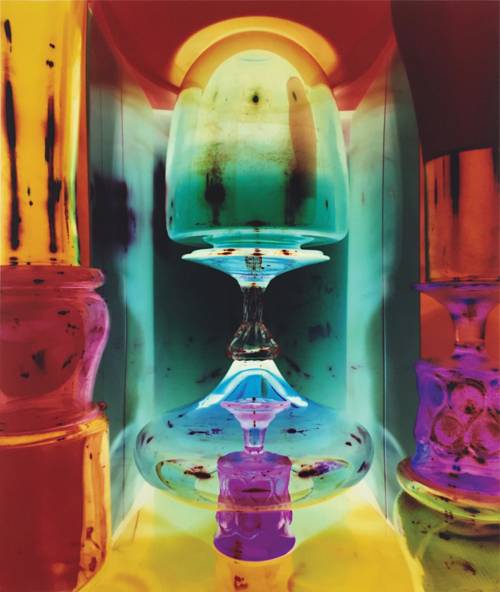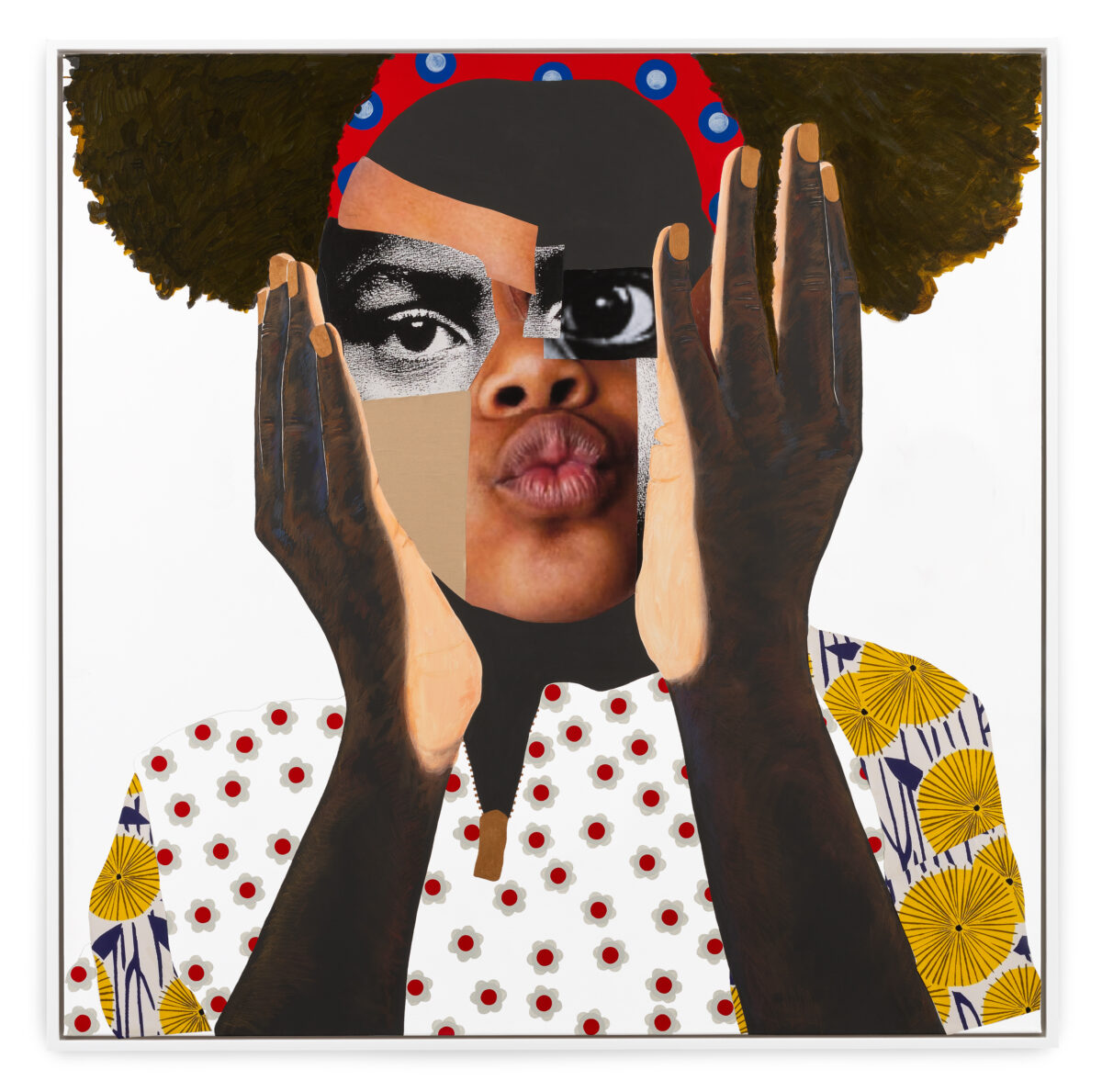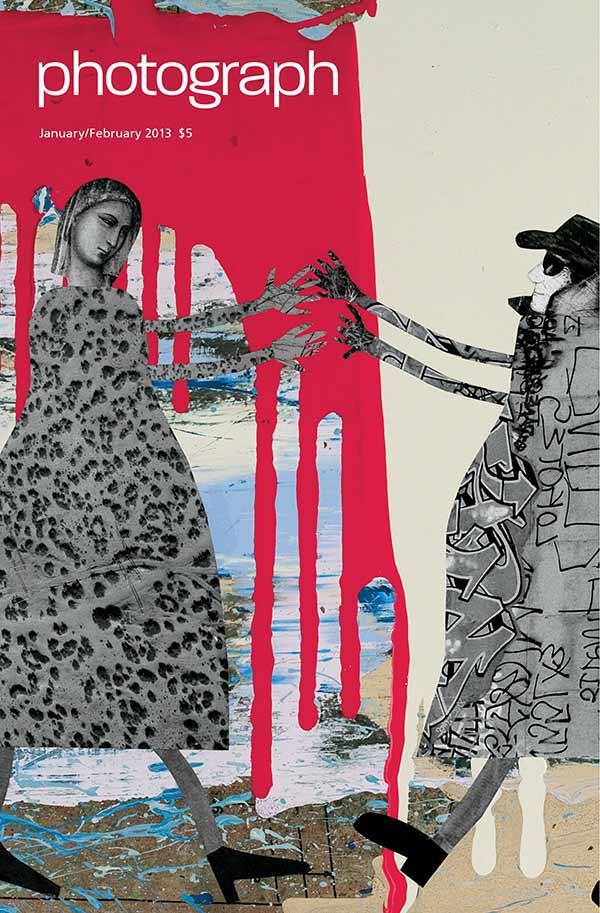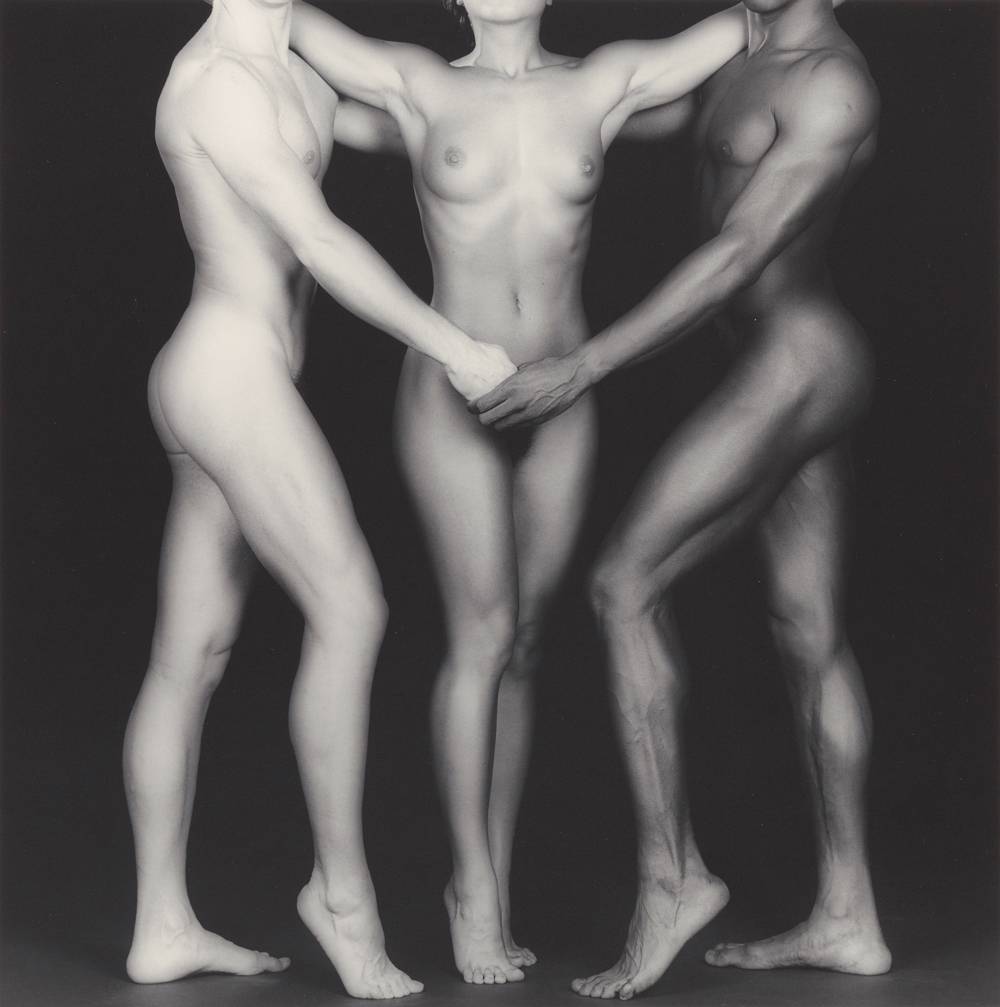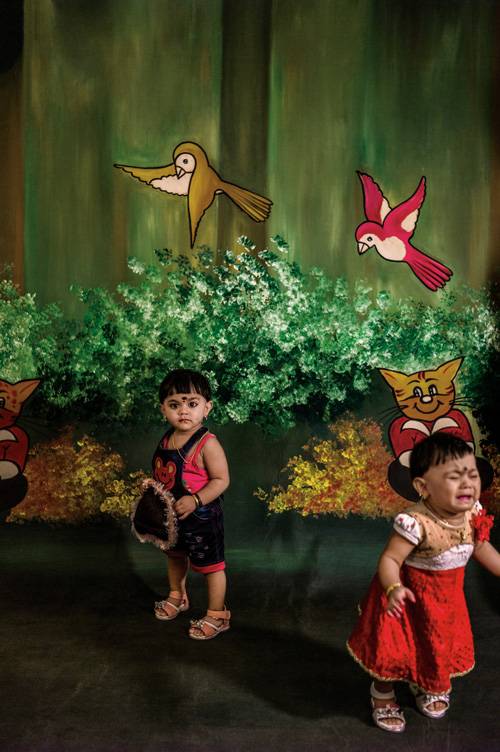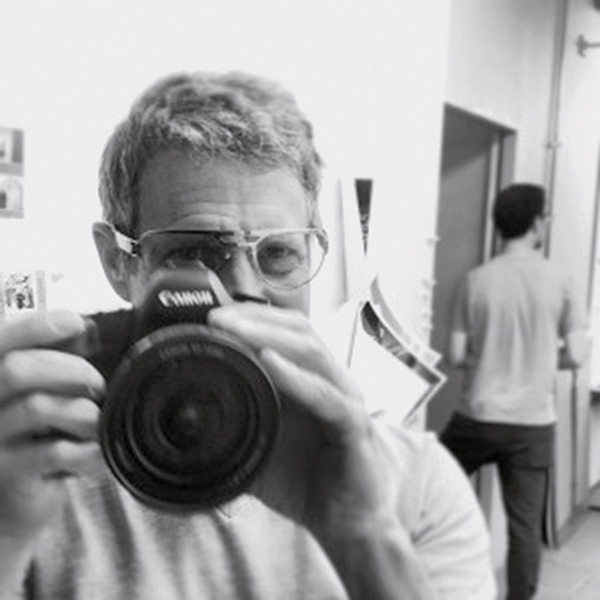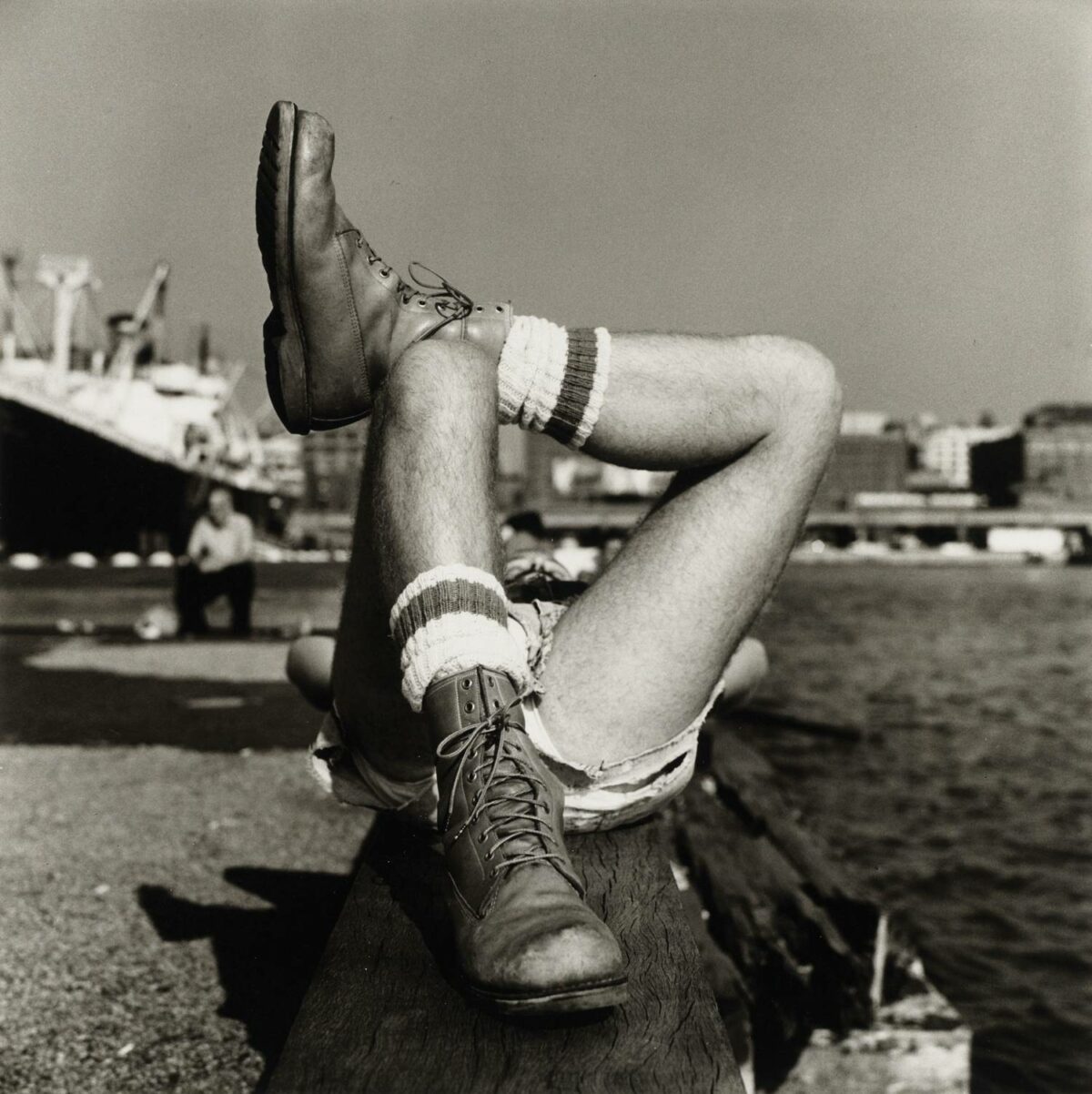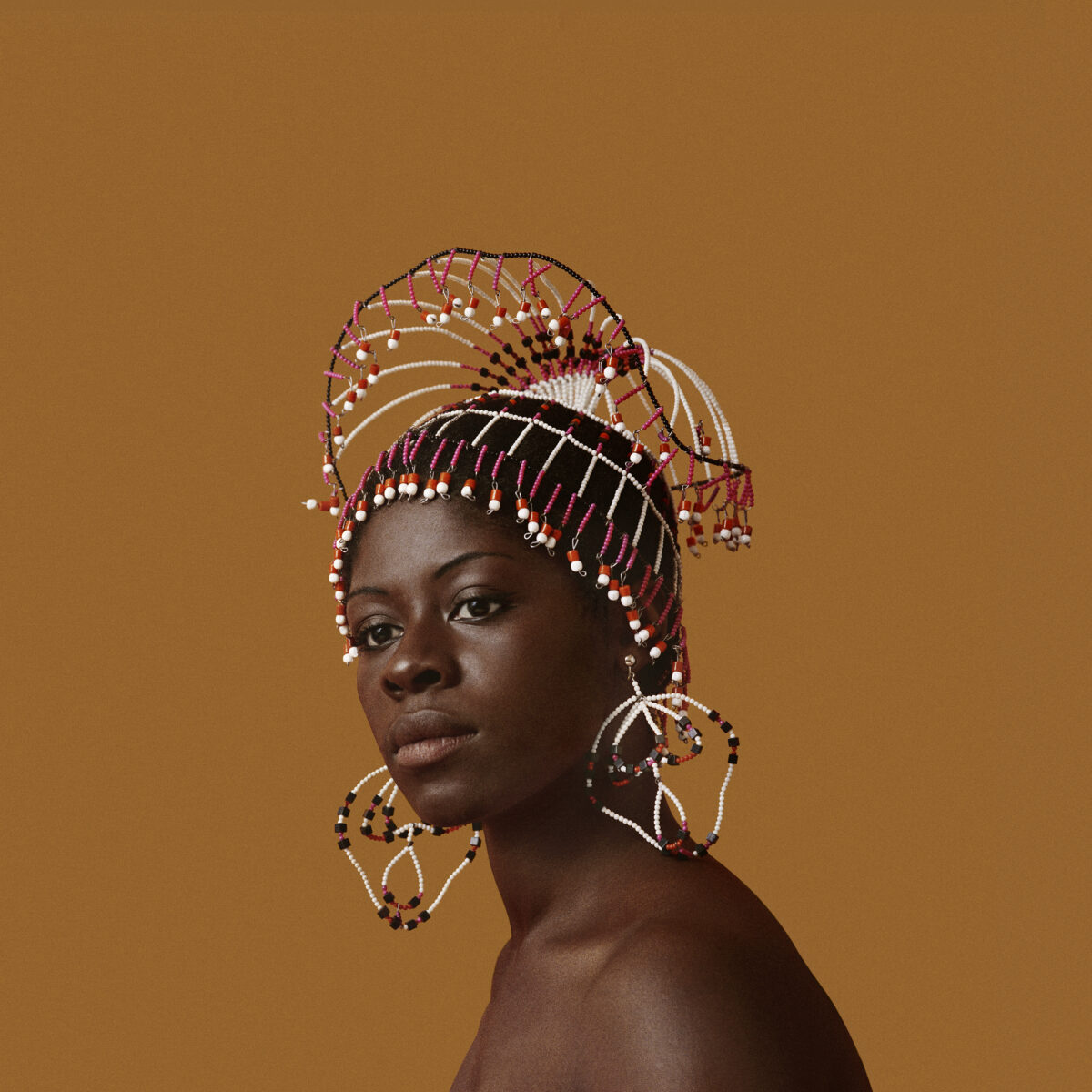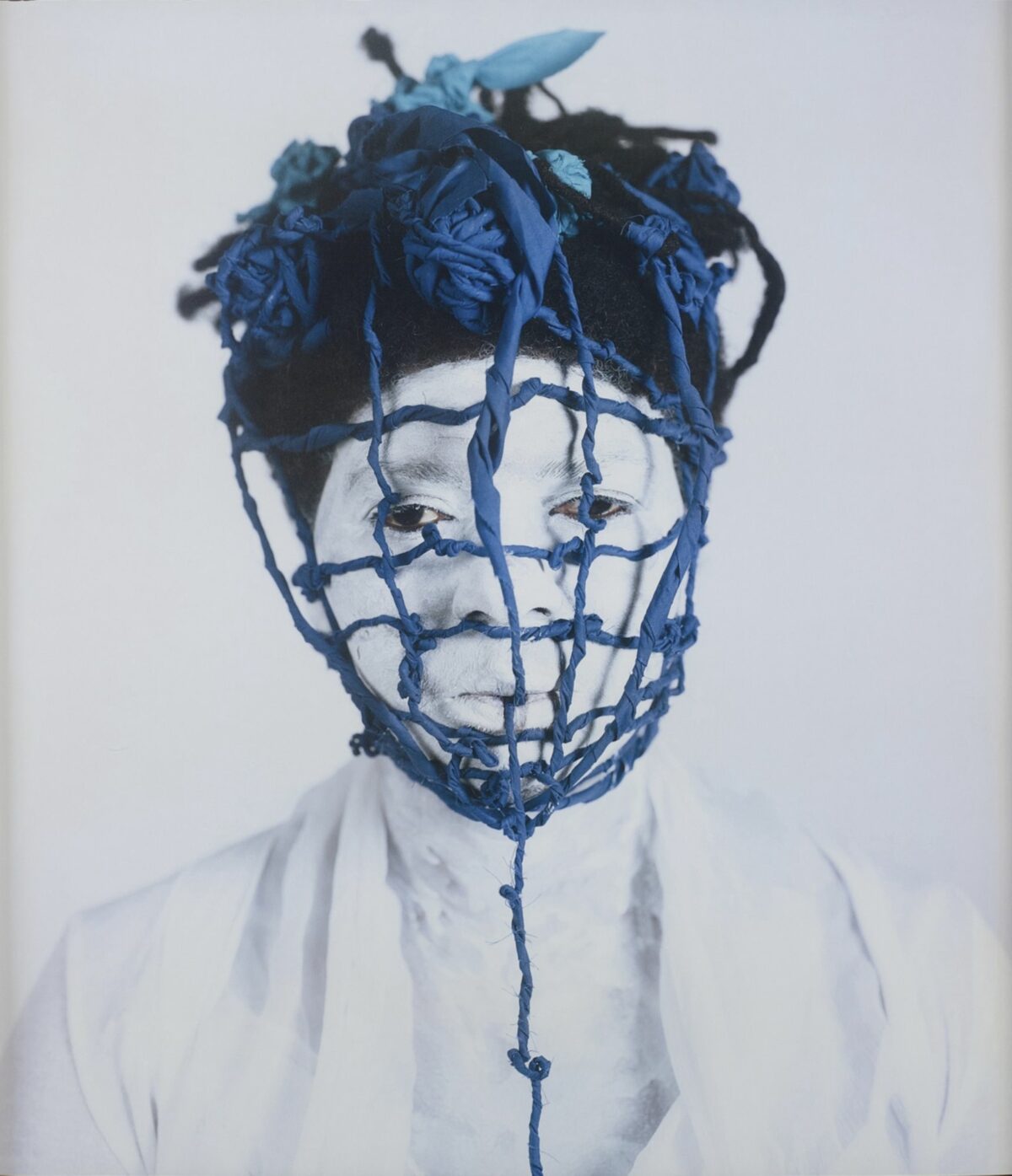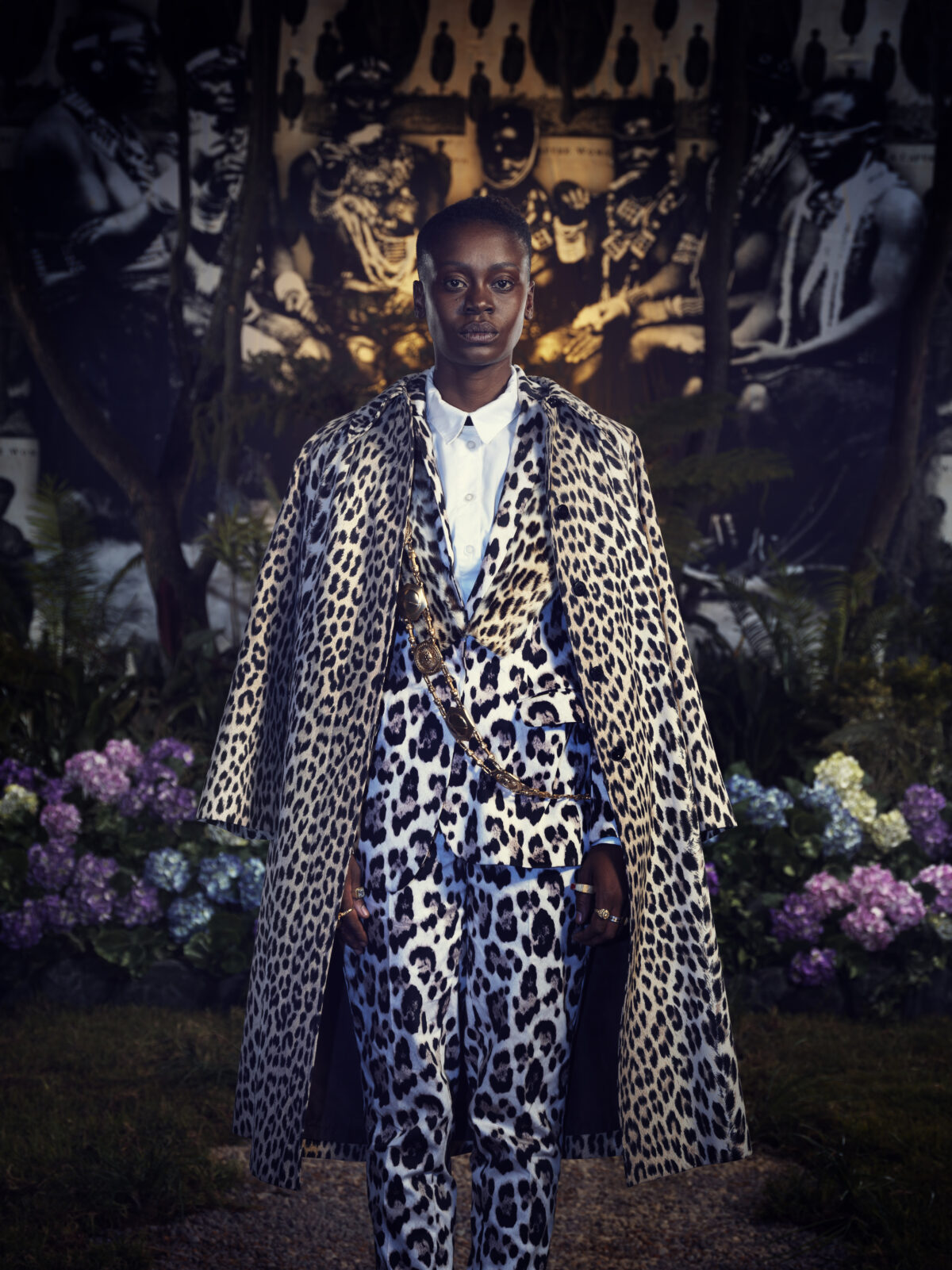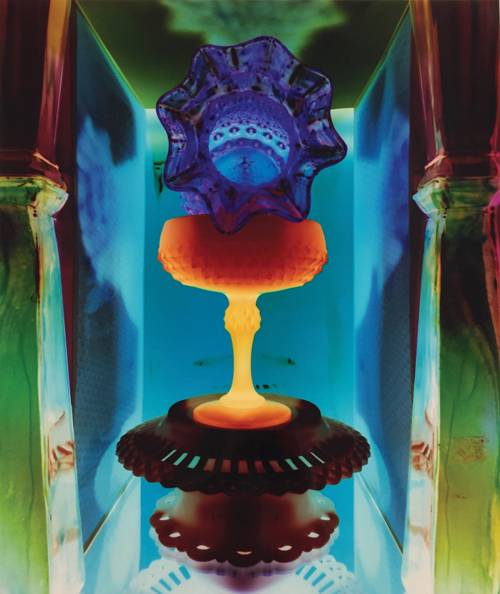

Mythology, architecture, Roman Catholicism, immigration, and an impressive collection of glassware all play a part in Robert Calafiore’s opulent photographs. Not to mention plenty of patience.
His 30×40-inch, one-of-a-kind C-prints, taken with a pinhole camera that Calafiore built himself, are made with exposures of at least 20 minutes; more often than not, they extend past an hour. Over a weekend of two 12- to 16-hour days, Calafiore will be happy to get a single successful image. No wonder he calls this work performative.
He finds inspiration in a variety of sources: the stained-glass windows and reliquaries he recalls from attending church as a child; Henry Fox Talbot’s 1844 image Articles of Glass; and Matisse’s practice of repeatedly painting the objects in his studio. Like Matisse, Calafiore, who often spends hours meticulously arranging the glass objects before shooting them, develops a camaraderie of sorts with the inanimate objects. “I know them inside and out,” says Calafiore, whose work is on view at Seattle’s Gallery 1/1 through November 11. “I love setting it all up, the scene, the backdrops and lighting…once it gets rolling, something clicks.”


Calafiore’s work with the pinhole camera began as a challenge. The assistant dean at the Hartford Art School, he has been teaching photography for over two decades. He often asks his students to build their own pinhole cameras as a way of introducing them to the fundamentals of photography. Around a decade ago, he decided to try it out himself and quickly became hooked on the format. He built large sets, a nod to the enormity of the ancient ruins he visited in Italy during his childhood. He used male models in his earliest photographs, inspired by classical Greek and Roman art, but he eventually turned to a collection of glass he had acquired from his family, who came to the United States from Sicily in the 1940s. The glassware had always been a part of his life, stored away in cabinets and hutches that, Calafiore said, “represent the beginning of a new life in the United States, after leaving behind the homeland of Sicily.”
Once exposed on paper, the camera’s wide angle and the long exposures produced richly saturated colors. Over time – and with a few happy accidents – Calafiore learned how to increase the density and saturation by adding additional light and shifting the composition (a kind of physical, “in-camera” dodging and burning). In the final prints, the glassware is transformed from something fragile into something majestic. “I love the duality of barely being able to breathe in the studio without knocking this thing down,” says Calafiore, “[and then producing] this image that is pretty powerful.”
